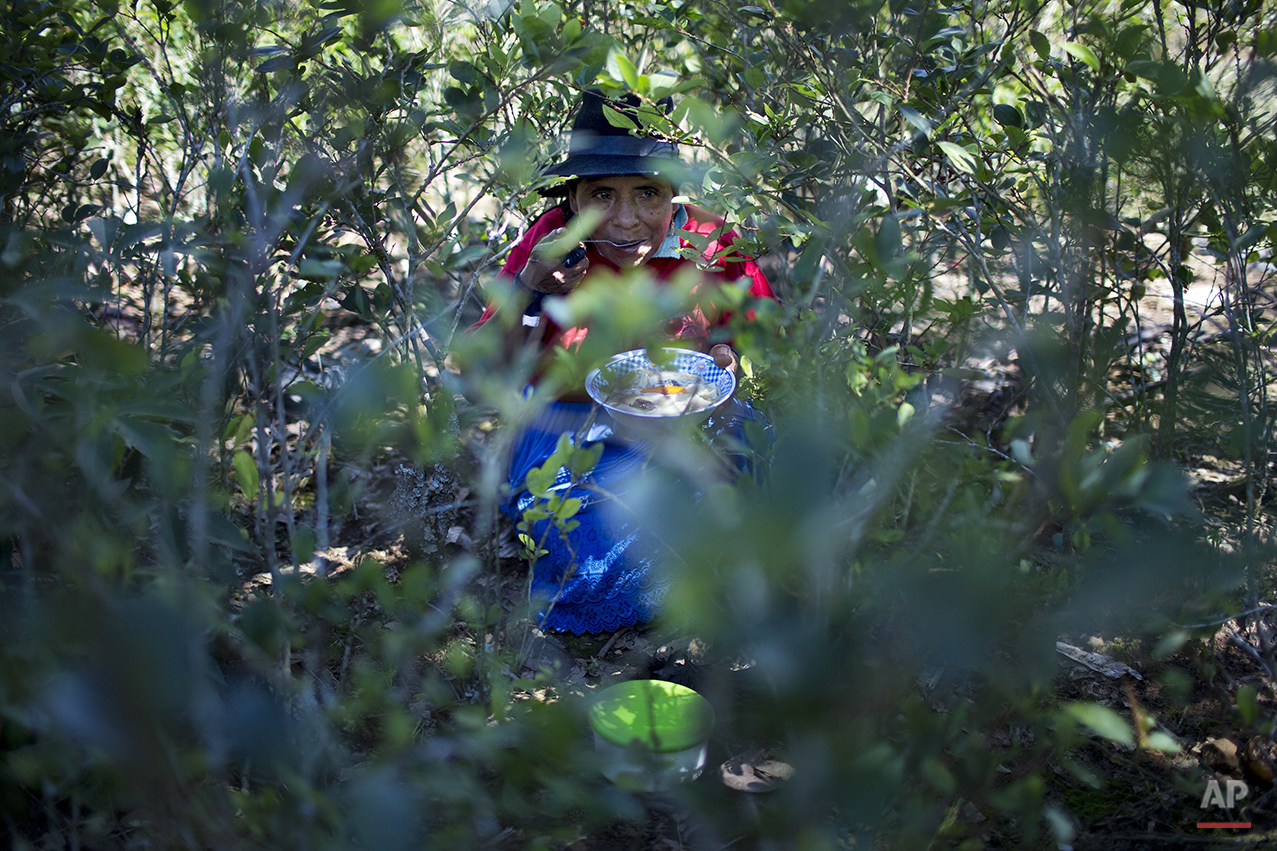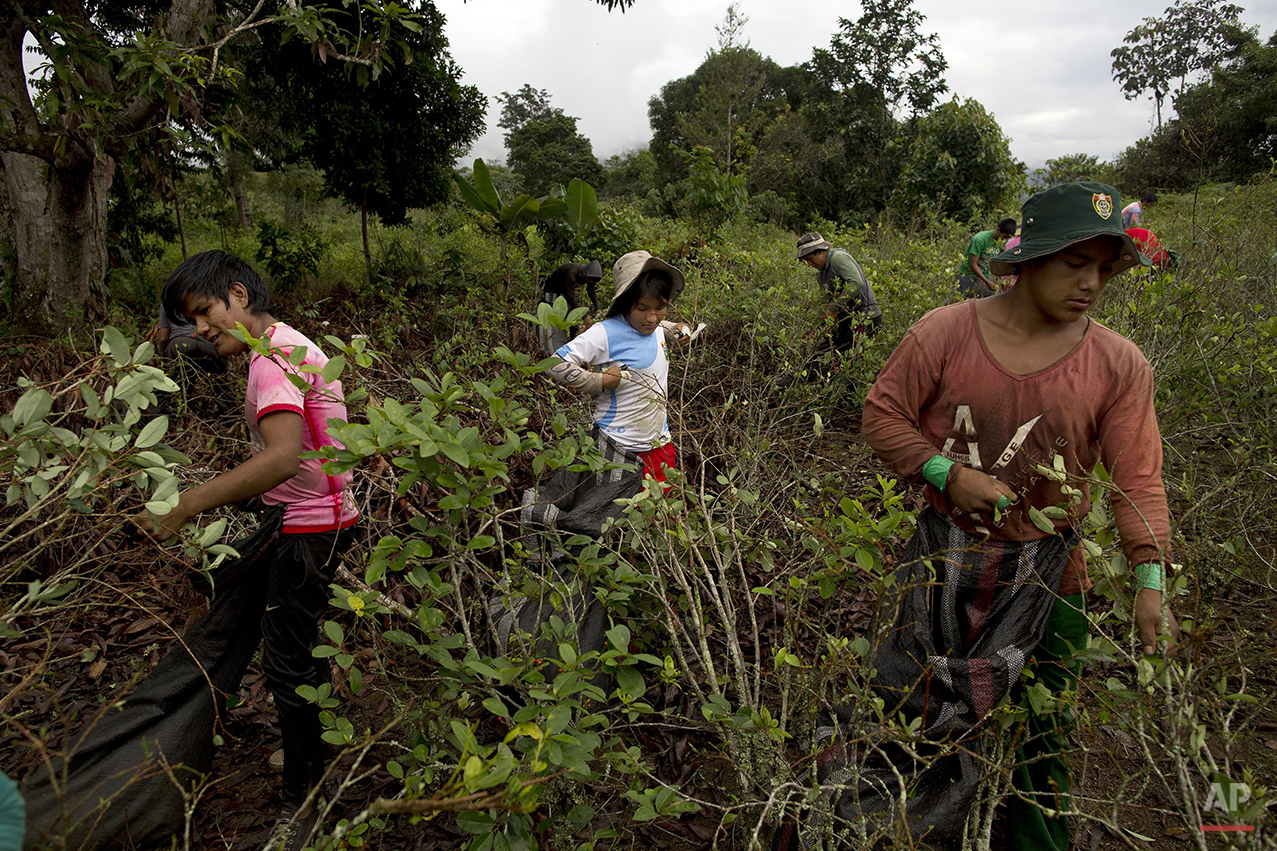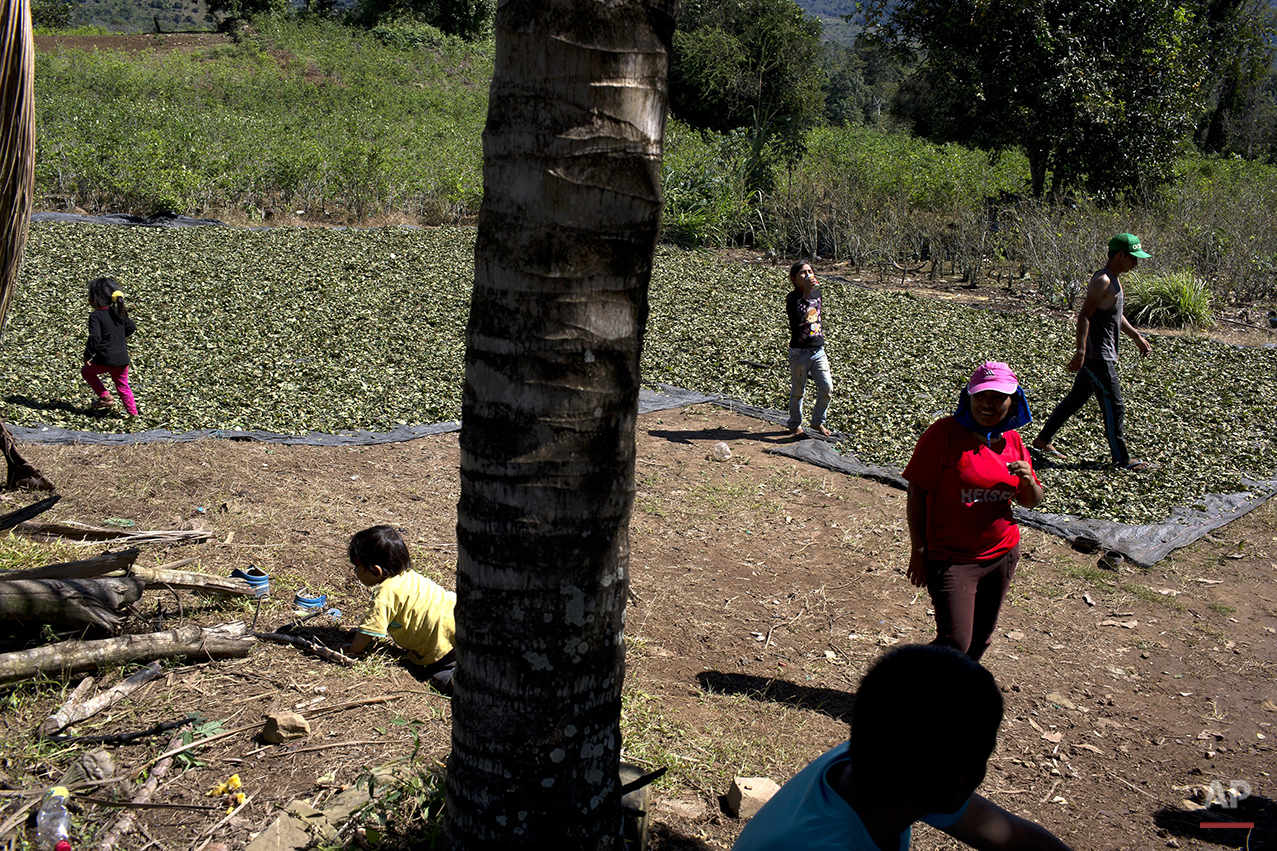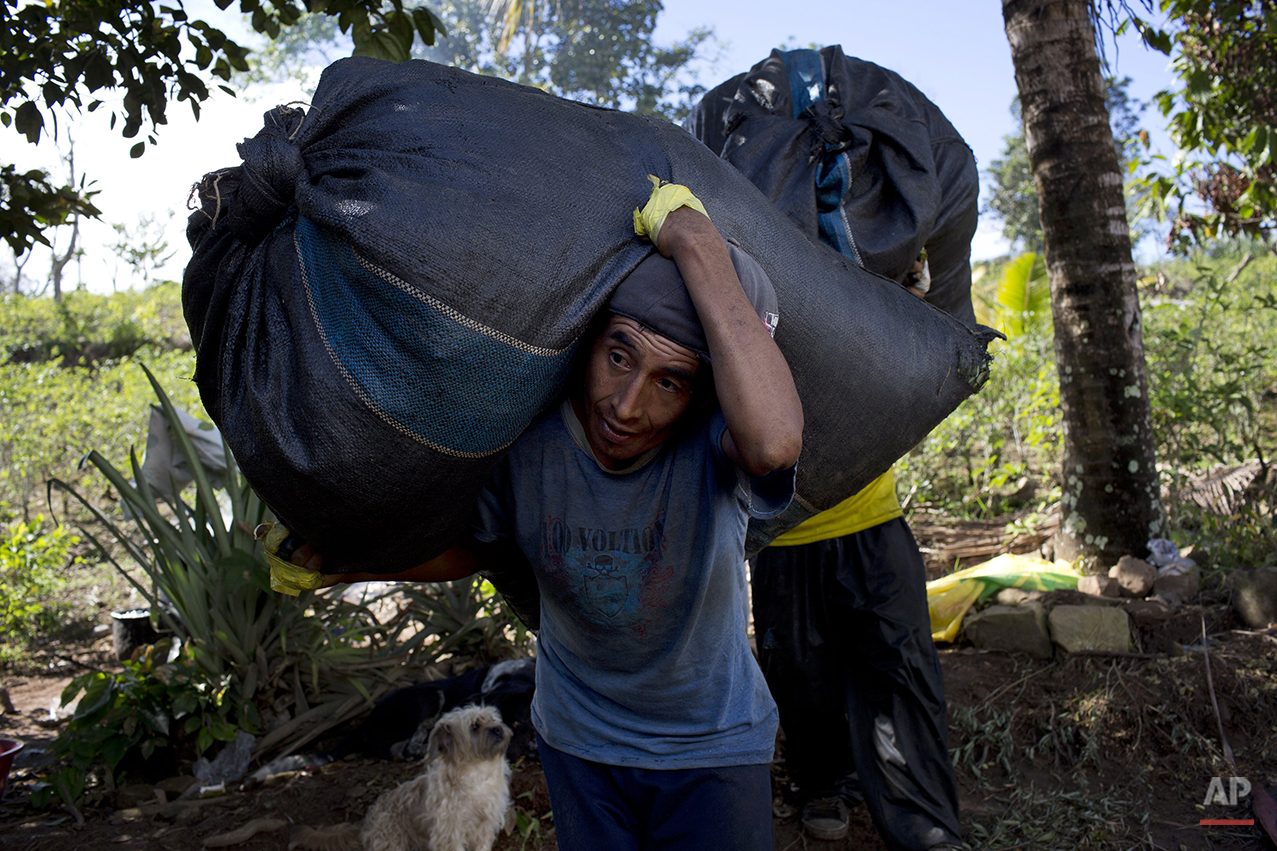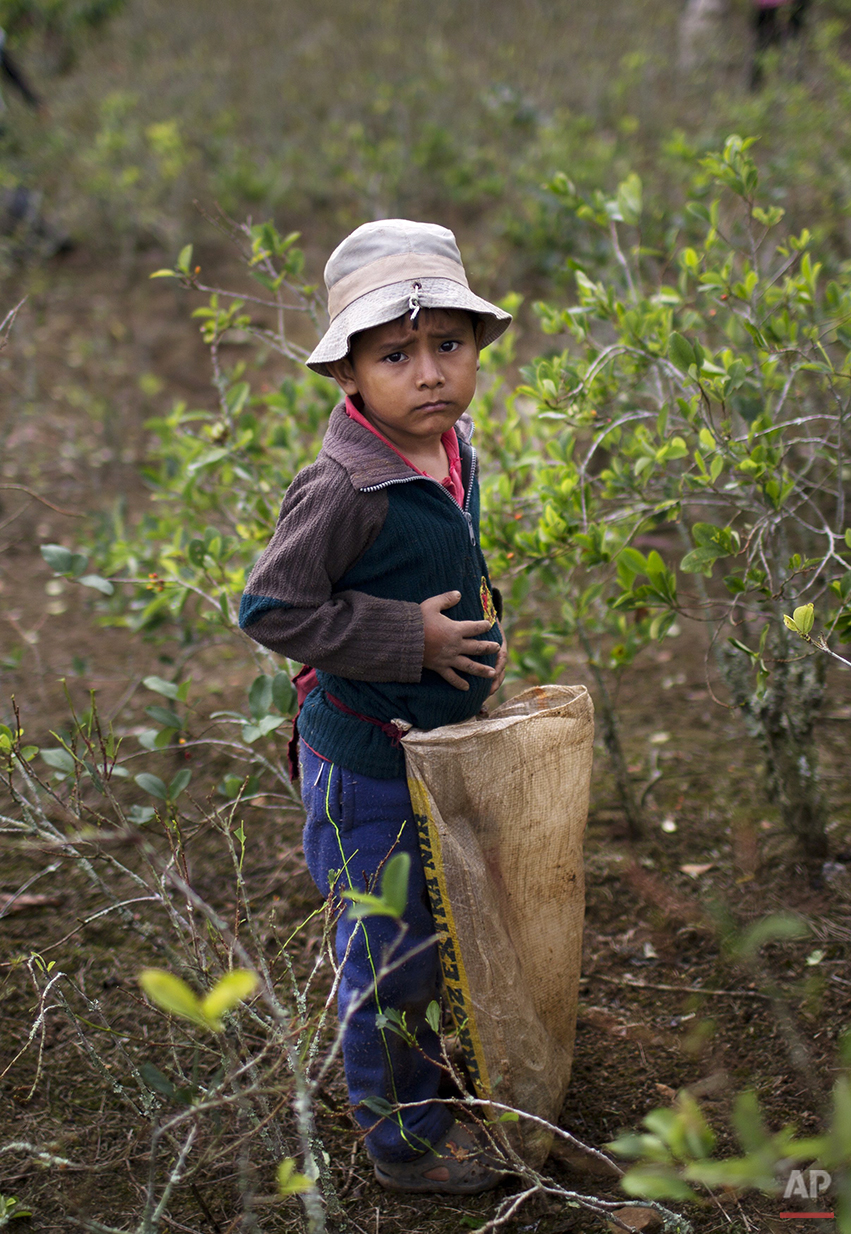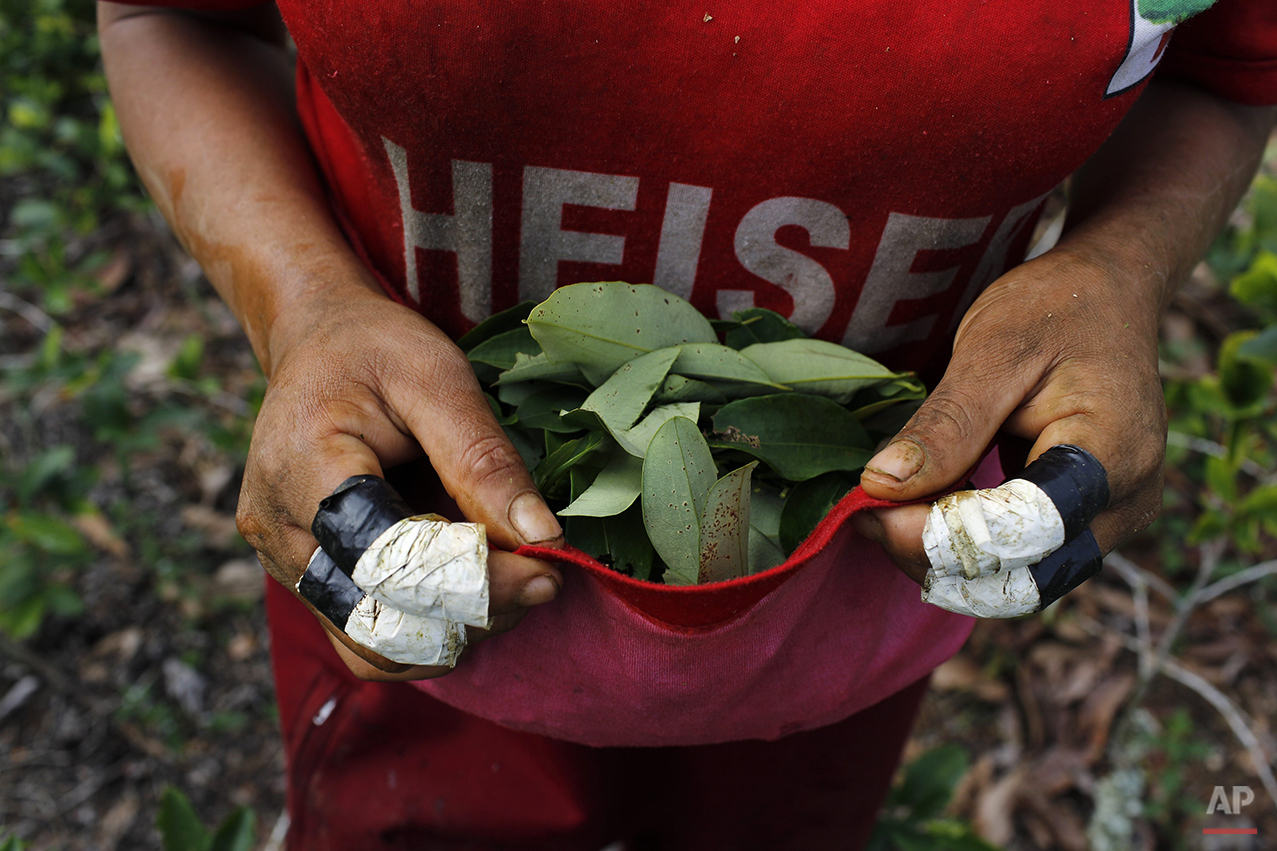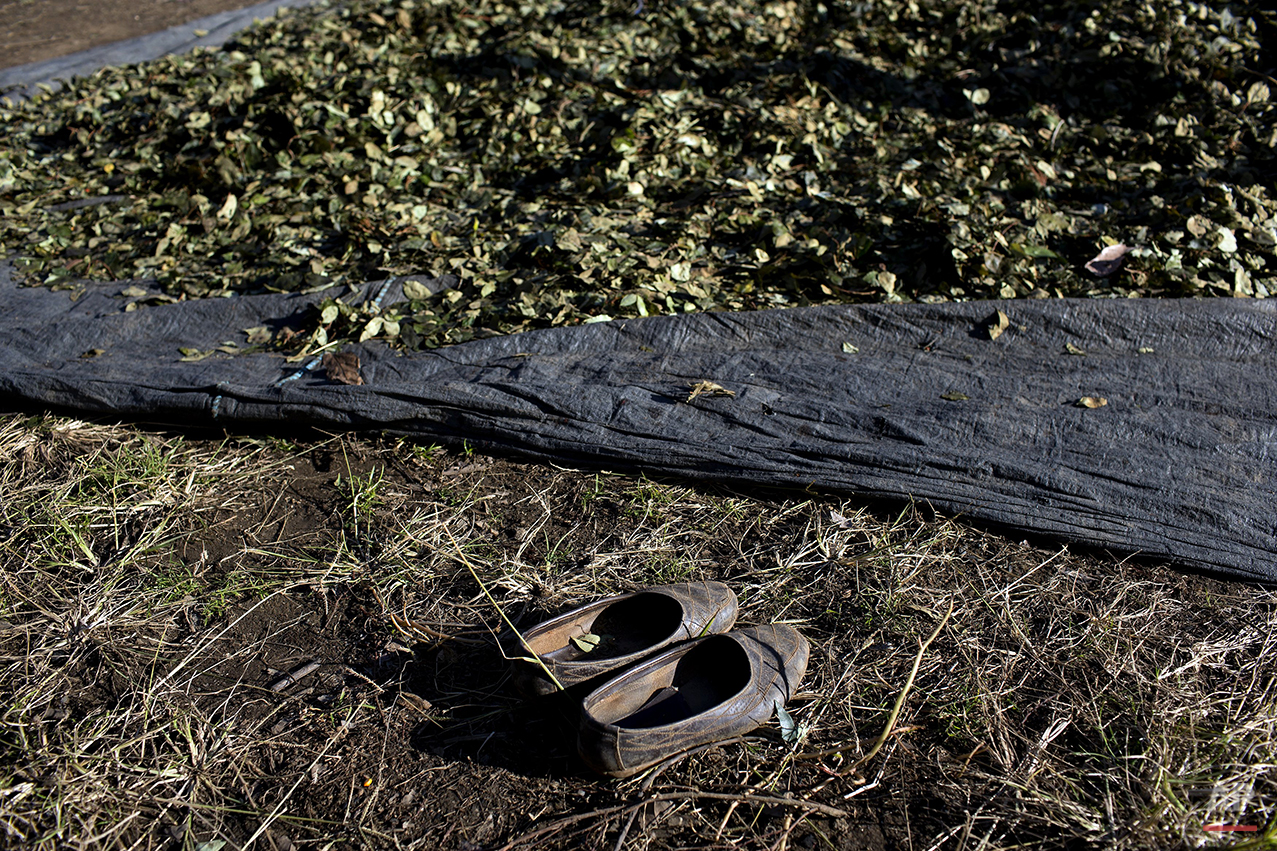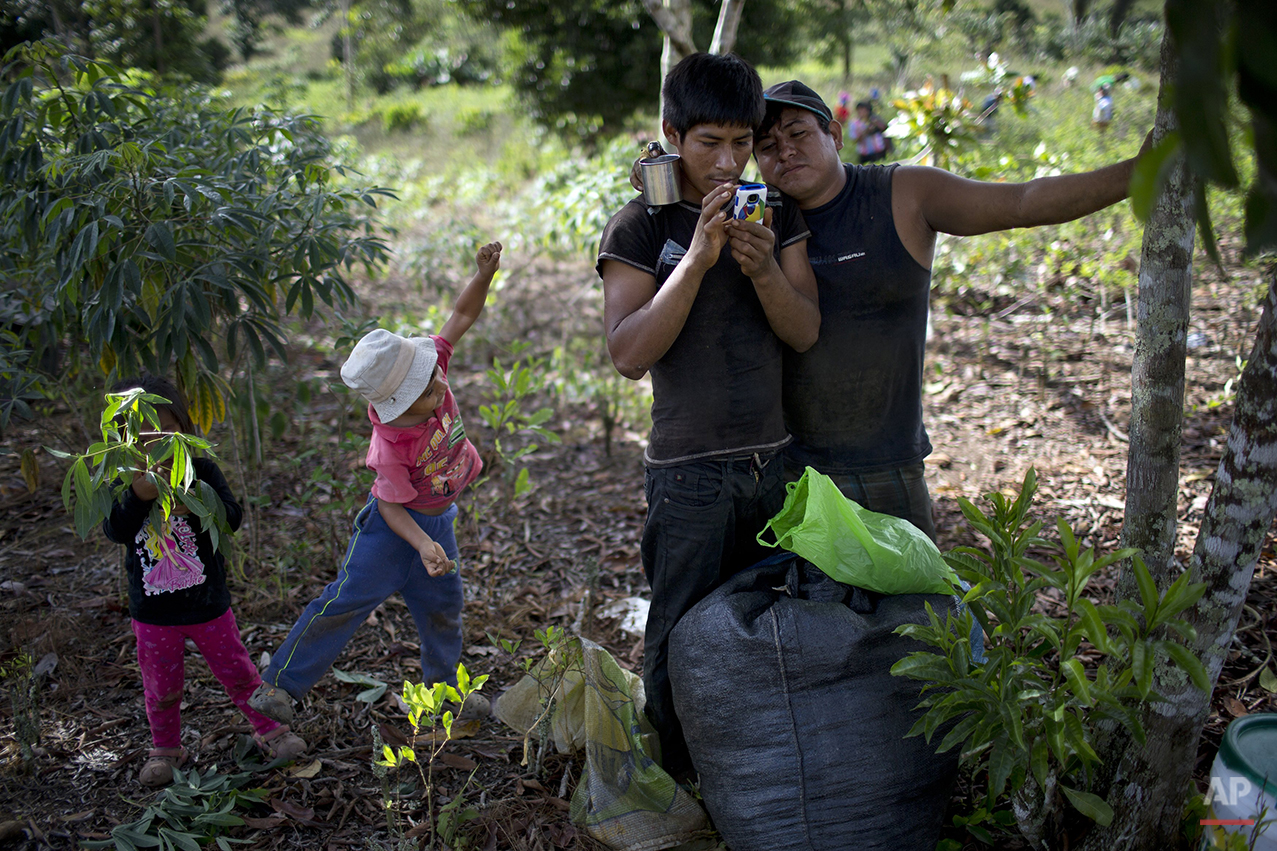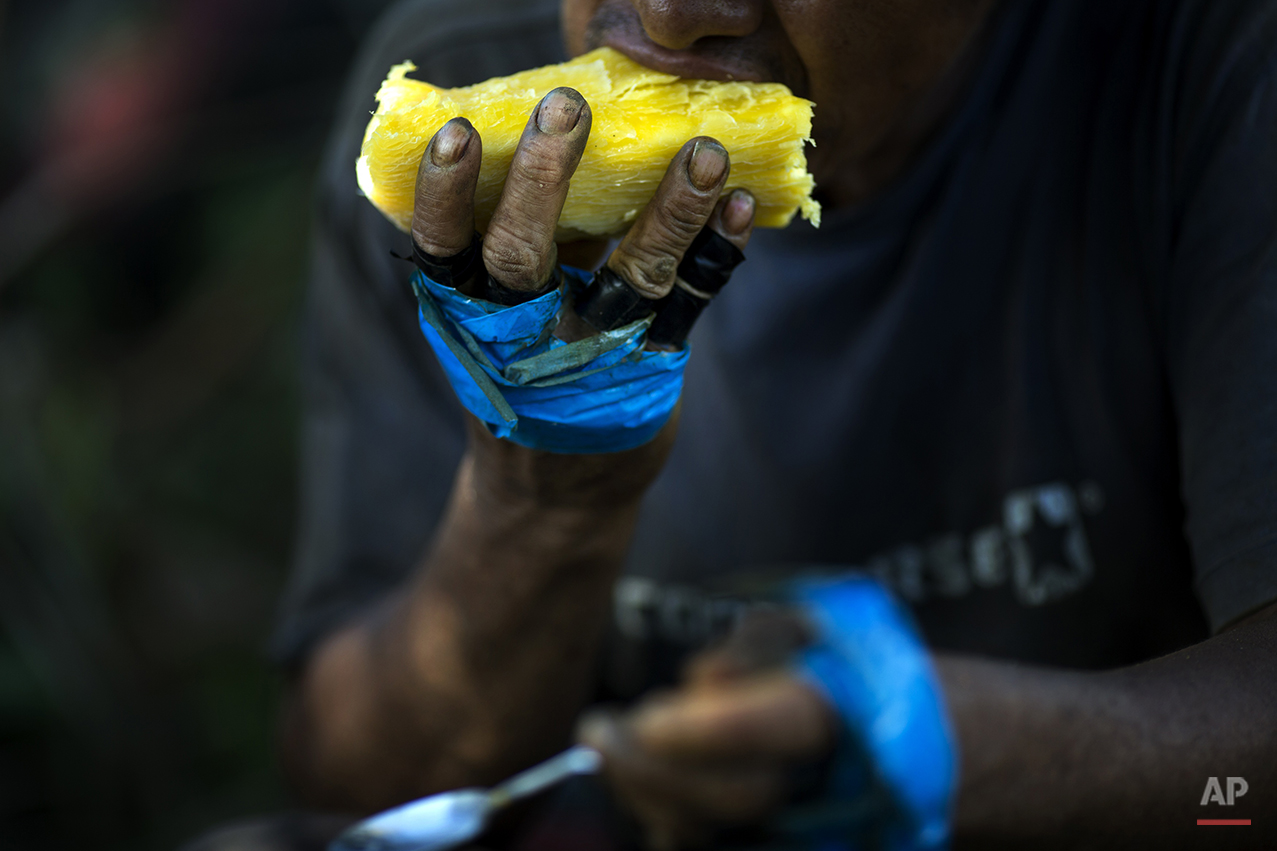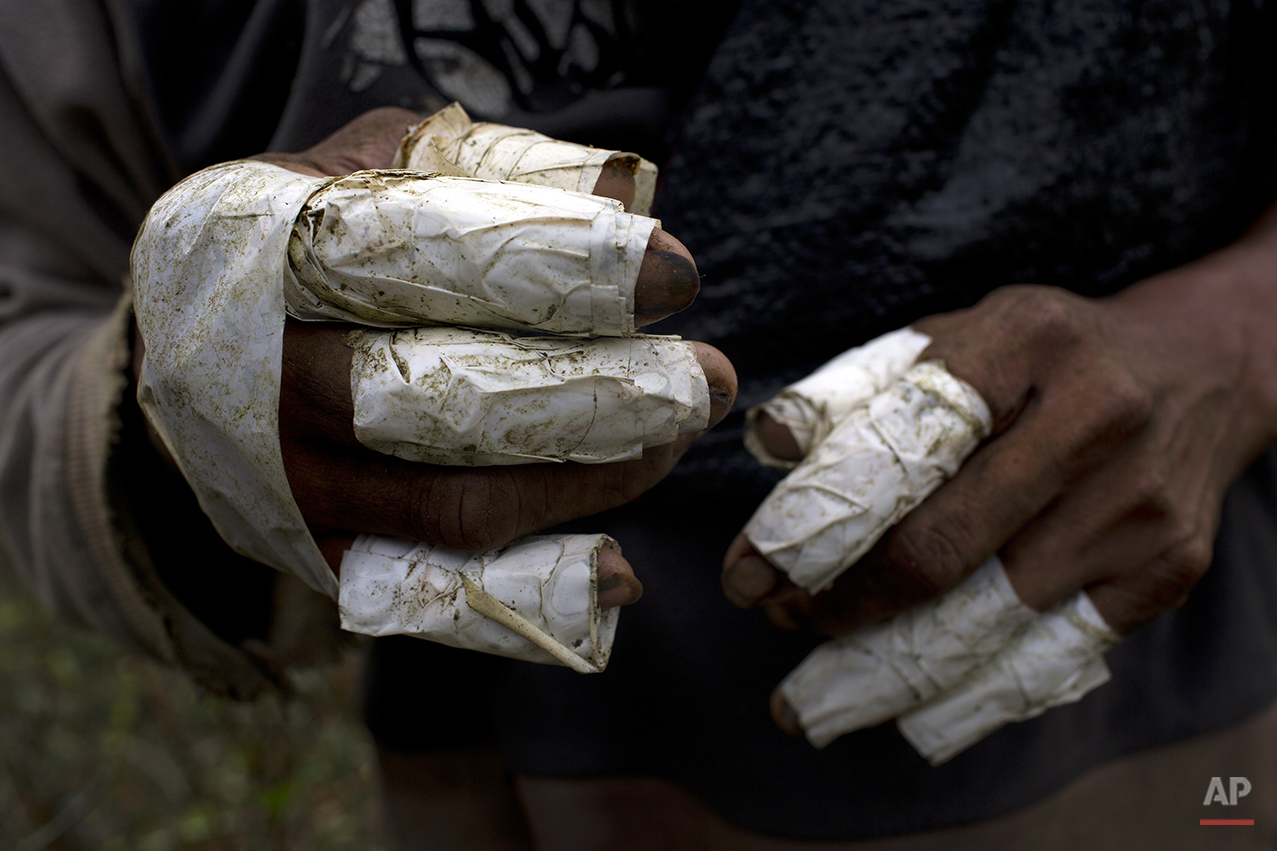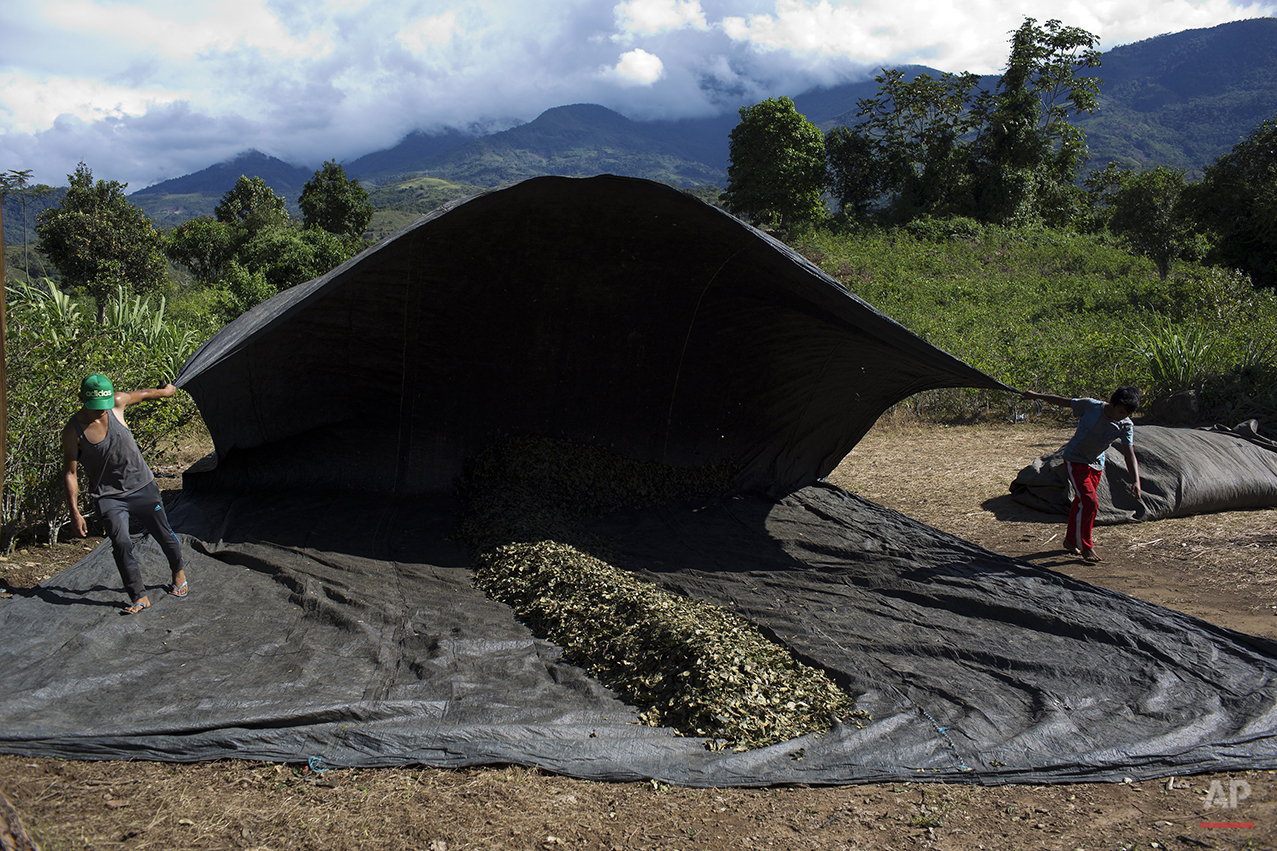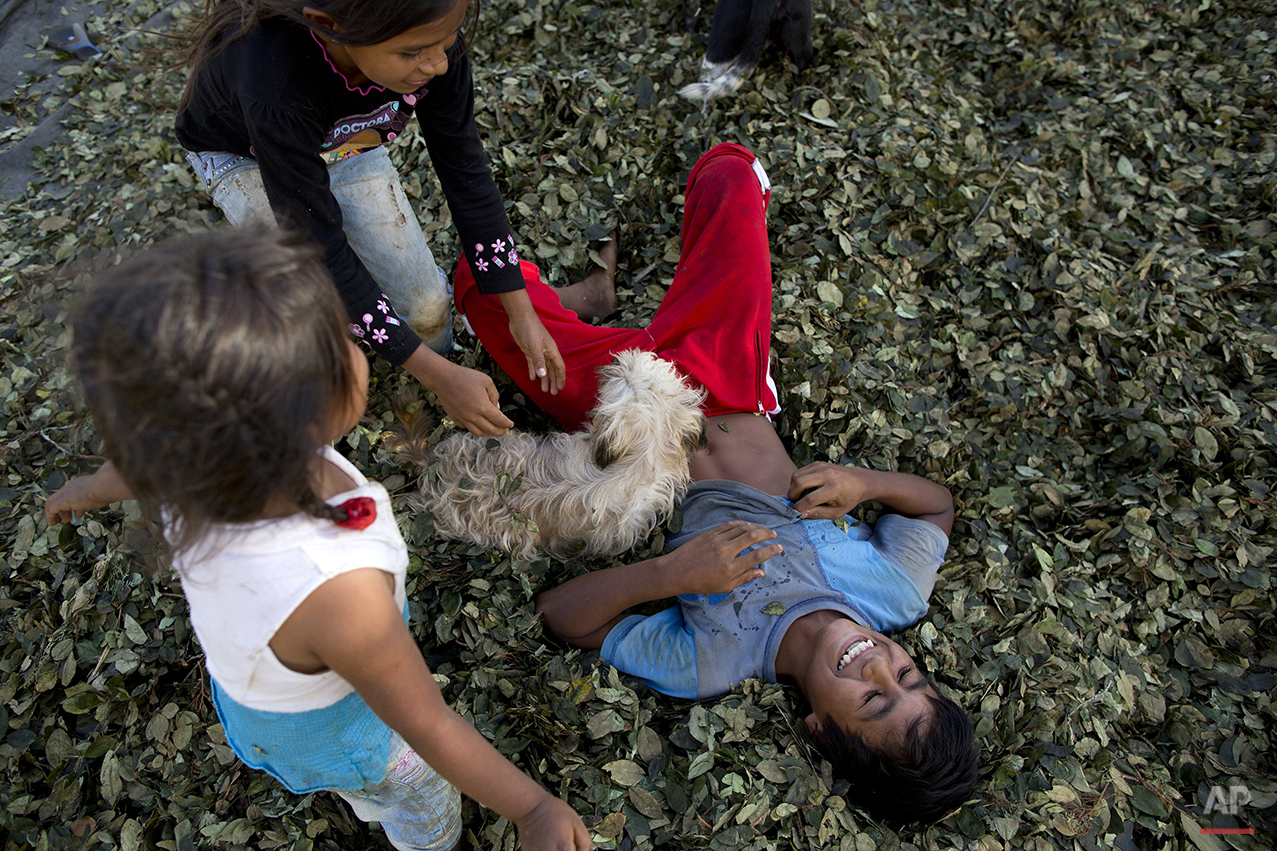In Peruvian valley, coca harvest means survival

Just before sunrise, Raul Rua joins 15 others, including women, teens and children, for a half-hour walk to pick coca in the world's No. 1 coca-producing valley.
Blisters and calluses cover his hands from long days of picking. But the work is the best he and others can find.
"If it weren't for this little coca leaf, there would be no food," Rua said.
The more than 600,000 people living in the Apurimac, Ene and Mantaro river valley depend on coca production. It is the reason many settled in the remote region where the Andes ridge meets the Amazon basin.
Nearly all the coca they pick ends up being processed into cocaine, and many worry that Peru's government will finally begin destroying the crop, as it has elsewhere.
"We aren't drug traffickers, but the coca leaf is the only sustenance for small-scale farmers," said Prospero Ayala, representative of the valley's agriculture federation. "The government spends so much on the military, the police, but hardly anything on education, health care or the people."
Farmers might be able to afford to abandon the crop if the government were to improve living conditions in the valley some 230 miles (370 kms) southeast of Lima, he said. Official figures show more than two-thirds of its inhabitants live in poverty while chronic malnutrition plagues about half of children under age 5.
"Here the children suffer. They are full of parasites. The education, as you can see, is terrible and let's not even talk about health care," Ayala said.
Some 17,000 children of coca pickers have not been to classes in a month because teachers are on strike to demand that their $300 monthly salary be increased by $581.
Pickers earn about 33 cents per kilo (2.2 pounds) of coca leaf, adding up to about $16 a day for the average yield. According to United Nations figures, some 99,000 metric tons of coca leaves were picked in the valley in 2013, compared to 22,000 tons in other parts of Peru.
Farm owners sell a kilo of leaves for $3.50 to wholesalers who supply drug traffickers. That's more than twice what farmers would earn for coffee or cacao, Ayala said.
If farmers could earn $4.70 for a kilo of coffee or cacao, a landowner with 2 hectares (about 5 acres) could earn more than $9,000 a year and "we would be secure, without having to grow coca leaves," he said.
Coca farmers were among the locals who, in 1984, formed citizen militias to help the military beat back Shining Path rebels, reducing the movement to a small group of fewer than 500 who now are deeply involved in drug trafficking.
President Ollanta Humala had planned to begin coca eradication last year in the valley, which is a military-controlled zone, but put the plan on hold after some in the armed forces cautioned that doing so could strengthen the Shining Path remnants.
The government destroyed 76,600 acres (31,000 hectares) of coca fields elsewhere in Peru while leaving untouched the nearly 50,000 acres (20,000 hectares) in this lawless valley.
"We would defend the coca leaf with our lives if the government attempted to enter," Ayala said.
Veterans of the militias believe the government owes them for defeating the rebels.
"Many have remained poor, disabled, without homes, without education for their children, without health care," said Oscar Cardenas, president of a self-defense group that once boasted about 20,000 members armed with rifles and machetes.
The solution begins with bringing the trappings of democracy into the valley — which no government has done, says former drug czar Ricardo Soberon.
"The big challenge is to make the coca picker consider himself a citizen."
See more photos | License these photos
Follow Rodrigo Abd | Twitter | Instagram
Text from AP news story, AP PHOTOS: In Peruvian valley, coca harvest means survival, By Franklin Briceno.
Spotlight is the blog of AP Images, the world’s largest collection of historical and contemporary photos. AP Images provides instant access to AP’s iconic photos and adds new content every minute of every day from every corner of the world, making it an essential source of photos and graphics for professional image buyers and commercial customers. Whether your needs are for editorial, commercial, or personal use, AP Images has the content and the expert sales team to fulfill your image requirements. Visit apimages.com to learn more.
Written content on this site is not created by the editorial department of AP, unless otherwise noted.
AP Images on Twitter | AP Images on Facebook | AP Images on Instagram

